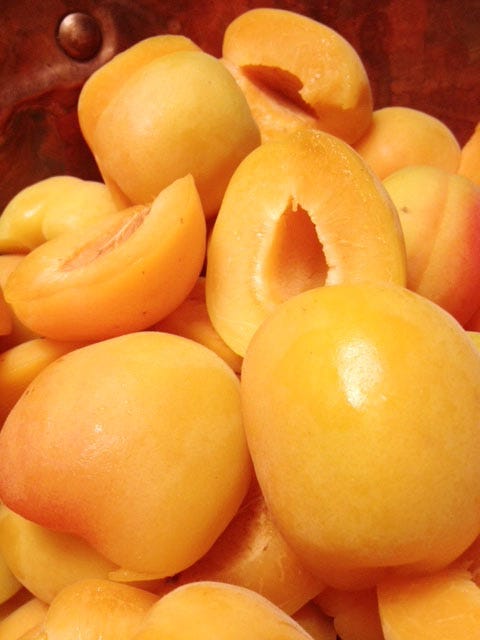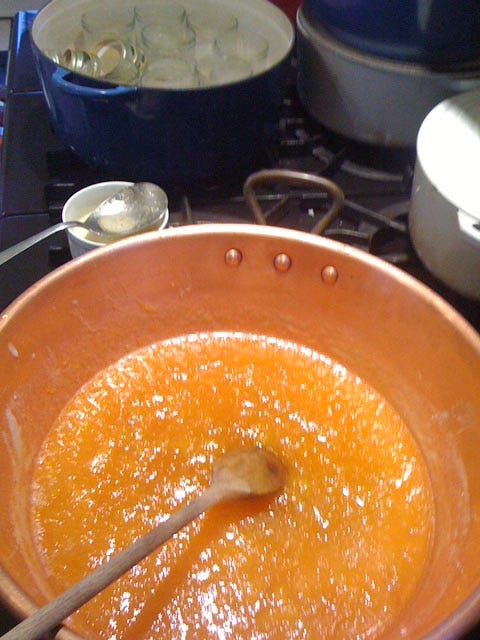DEAREST CHLOE
story, recipe and photography by BRENDA ATHANUS
Many years ago, when we first met Chloe, we never knew much about her, or even how old she was—she was a French woman of mystery. The one thing we knew was that she was very fussy about all the food she purchased, especially her cheeses. She would arrive at the strike of nine in the morning as the first baguettes were exiting our oven. She’d order one be put aside and turned her attention to the cheese case. If we had a wild and unusual little French cheese she would grab it, turning it all around for careful inspection, while leaving the cheese case doors wide open. If she liked the cheese, she would tell us a story. If not, she’d put it back anywhere and ask for a fresh cut piece of Comté and depart with her hot baguette until next week.
Over many years, we learned that she was a war bride and came to her young husband’s hometown in Maine. She had a lackluster relationship with her husband as well as her new hometown. After many years, she gave birth to her one son who moved away after high school and became an engineer in Connecticut. Chloe always said he was too busy to visit, and they rarely saw him, but they spoke on the phone every Saturday morning.
Chloe was pencil thin with the most beautiful henna-red hair, always cut in a stylish slanted pageboy. Her smooth complexion had barely a wrinkle and her high cheekbones gave her an elegant, almost regal look. She was so beautiful that I would catch myself starring at her when she wasn’t looking. But Chloe had such sad eyes I avoided looking directly at her. She could be very tender and kind, or she could shatter a glass with a disapproving stare.
After many years she started bringing us a small jar of freshly made apricot jam in the early summer. With little fanfare she would reach into her oversized pocketbook, take out a paper towel wrapped jar after she had checked out, and hand it to one of us before bidding us ‘au revoir.’
In her later years she spoke French to us, way too fast as we struggled to translate the last sentence, she’d prattle on at lightning speed. When she missed shopping one week, we called her at home to make sure she was okay. Chloe said she had been a “little sick” but she was fine now, and we would see her soon. I promised her we would all share a cup of tea together.
The following week she arrived with a piece of paper, announcing she had a very special present for us. There on a piece of notebook paper was her apricot jam recipe. She asked us to carry it on. Her handwriting was old fashion, with loops on her R’s, and curlicue S’s. I could imagine all the years of letter writing to her family in France. The recipe was from her grandmother in Marseilles, France, from the late eighteen hundreds, one of the few treasures this young bride brought with her. She wanted us to have it! We were both teary-eyed and honored. On the way out the door she said she expected to see jars of apricot jam on our shelves the following week.
We had two, maybe three more visits with Chloe and then she was gone, her phone just rang and rang.
After a while her son came from Connecticut to empty out her house to sell and on his way out of town he stopped at our store to tell us what had happened to his mother. He looked just like Chloe—same height, same complexion and the same sad eyes. His mother told him what cheeses she had bought and all about the conversations we had on each of her visits. They talked every Saturday morning on the phone—the highlight of her week. He acted as though he knew us as well as his mother on his first and only visit. He picked up the same cheeses and a hot baguette to take home, just like Chloe always did.
He asked if we made sandwiches, usually I don’t, but this time it was different. Chloe wouldn’t want him to drive that distance without eating well, so I made him a very special sandwich, feeling Chloe guiding my hands. I took a warm baguette, cut it in half, buttered it on both sides with a special local butter, sliced pieces of creamy, ripe Brie and piled paper-thin slices of pale pink French ham and wrapped just the bottom half in butcher paper like you buy before you board a long-distance train in Paris.
When anyone asks what the best jam is that I make, I never hesitate—apricot jam, of course! And I also enjoy the process of making it the most.
I pit the best rosy blushed apricots I can find, measure the sugar carefully, squeeze the lemon juice over the mixture and I can almost see Chloe’s arthritic fingers doing the work. I let it sit overnight to marry the flavors and then I cook it in my French copper confiture pot. It is a beautiful sight to see the jam forming and It always reminds me of the deep red color of Chloe’s hair as I stir gently.
And Chloe’s recipe lives on…
4 pounds ripe apricots with a red blush
Juice of an average size lemon
6 cups white sugar
Cut the apricots in half and remove the pits. Pour the measured sugar and lemon juice over the fruit, stir well and let it sit overnight in the refrigerator.
The next day cook the apricot mixture over medium heat, in a wide, heavy bottom pot for 45 to 50 minutes, skimming off the foam that collects. When the jam starts to thicken, keep your eye on it and stir so it doesn’t stick to the bottom of the pot.
Freeze a plate and when you think it is getting close to the right consistency, put a spoonful of hot jam mixture on the plate, wait for it to get cold and then run your finger through the jam. It should not be runny, but thickish like French jam. Repeat until desired consistency.
Boil jam jars and covers to sterilize in boiling water. Pick a pot tall enough to cover your filled jars when it is time to process them. Fill the hot jar to within a half inch of the rim, clean the rim and screw the hot lids on. Carefully lower into the nearly boiling water and process for ten minutes. Remove each jar to a towel-covered wooden cutting board and wait for the pinging sound of the lids indicting a good seal.
Wait two weeks for the flavor to marry before enjoying and store in a dark cupboard.



Do you peel the apricots or include the skin in the jam?